Crepe myrtles are an attractive ornamental tree loved by landscapers and homeowners alike. With beautiful blooms in shades of red, pink, purple, or white that last all summer until late into fall, it’s no surprise these trees make a gorgeous addition to any home landscape. If you’re looking for the perfect time to plant your crepe myrtle, you’ve come to the right place! Here we discuss when is the best time to plant crepe myrtle so that it will be healthy and thrive in its new space.
Special Characteristics of Crepe Myrtle Trees
Crepe myrtle trees are beloved for their stunning blooms and fascinating bark. They come in a variety of sizes, from tiny shrubs to tall trees, and they can be found growing wild in many parts of the world. Here are some of the most interesting characteristics that make crepe myrtles so unique:
Long Blooms
Crepe myrtles are known for their long blooming season, with many varieties flowering from summer through the fall. Their flowers come in a wide range of colors, including white, pink, purple, and red. This makes them popular for gardeners who want to add a splash of color to their landscaping year-round. [1]
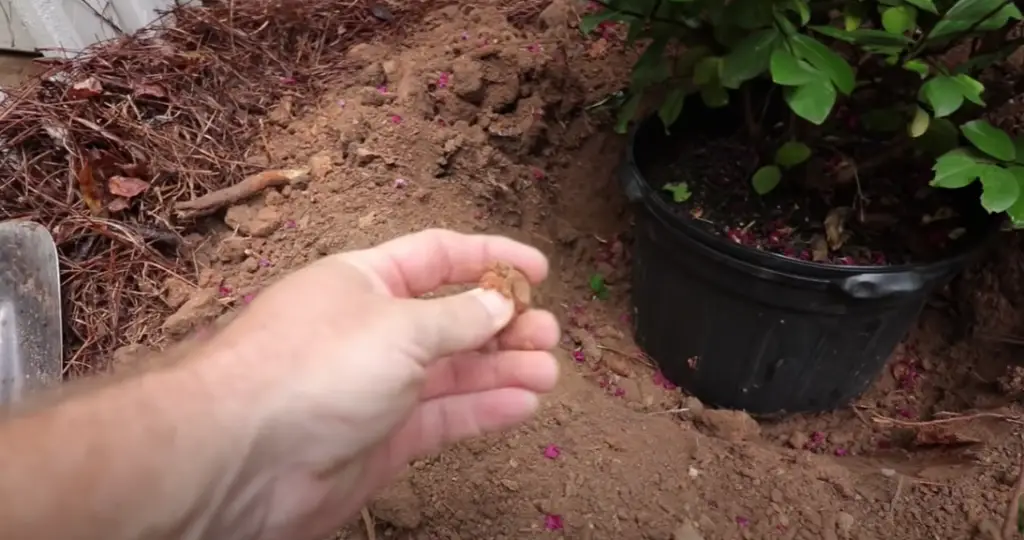
Varied Forms
Crepe myrtles grow in a variety of shapes and forms. Some are upright or pyramidal, while others have an arching form. There are even weeping crepe myrtle varieties that give a graceful, drooping appearance. These beautiful trees can be pruned into various shapes to suit any garden design.
Interesting Bark
One of the most interesting features of crepe myrtle trees is their bark. As they age, they develop a unique looking pattern that resembles wood grain. This gives them an attractive look and makes them stand out in any landscape.
Low Maintenance Requirements
Unlike many other species of trees, crepe myrtles require very little maintenance to thrive. They are fairly drought tolerant and are not prone to many common tree diseases or pests. This makes them ideal for busy homeowners who don’t have the time or resources to devote to extensive tree care.
A Versatile Plant
Crepe myrtles can be used in a variety of ways, from providing shade to creating an attractive border along pathways. They can also be planted in containers for a decorative accent on patios and decks. With their wide range of sizes and shapes, crepe myrtles are an ideal choice for many different landscaping projects.
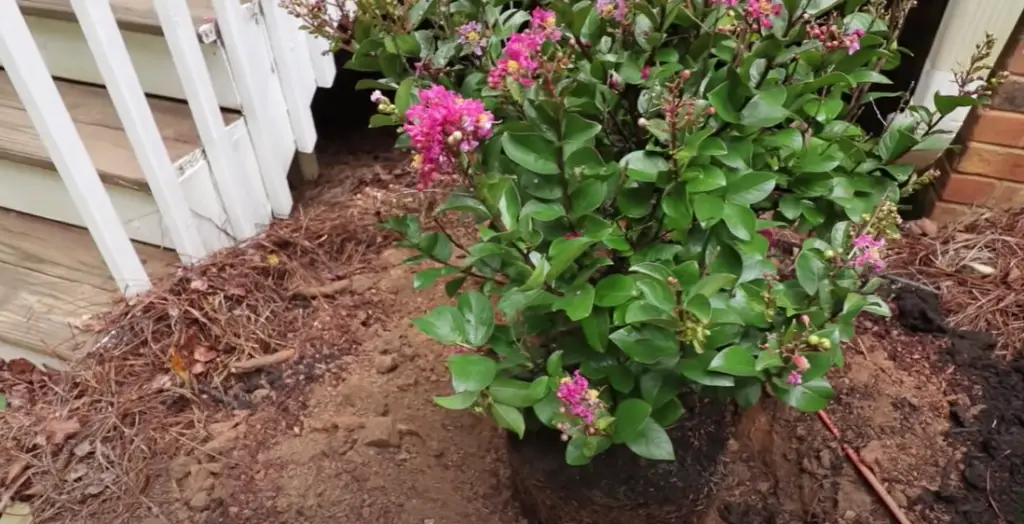
An Adaptable Species
Crepe myrtles are exceptionally adaptable trees, and they can thrive in a variety of climates. From humid subtropical regions to dry desert areas, crepe myrtles will grow wherever they’re planted. They even tolerate salty soil near the ocean, making them a great choice for beachfront properties.
An Attractive Addition to Any Garden
Crepe myrtles are one of the most popular landscape trees around, and it’s easy to see why. Their beautiful blooms, interesting bark, and versatile forms make them an attractive addition to any garden. With so many varieties available, there’s sure to be a crepe myrtle tree perfect for any space.
A Showstopper in Every Season
Crepe myrtles are truly a showstopper in every season. In the summer and fall, their colorful blooms light up any landscape, while in the winter they provide texture and interest with their unique bark. With a little care and pruning, crepe myrtles can be an eye-catching focal point in any yard for years to come. [2]
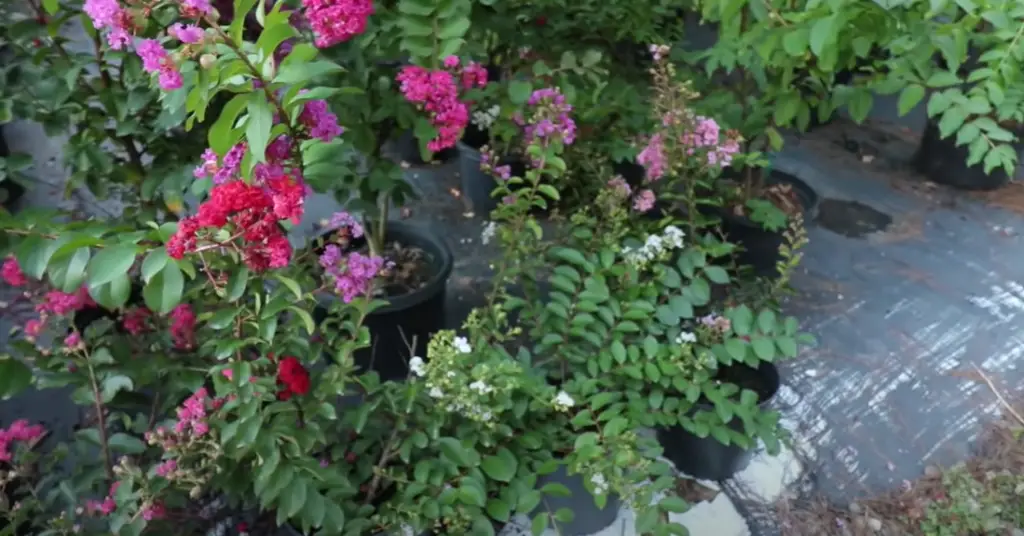
What are the Different Varieties of Crepe Myrtle?
Crepe myrtle is a popular shrub and tree species that grows throughout the United States. Its popularity is due to its colorful blooms and foliage, as well as its hardiness in various climates. There are many varieties of crepe myrtle available, each with different characteristics. Here is a list of some of the most common varieties:
- Natchez Crepe Myrtle: This variety is a fast-growing tree with dark green foliage and showy white flowers. It blooms from July to September and can reach heights of up to 25 feet.
- Tonto Crepe Myrtle: This large shrub or small tree has fragrant pink flowers that bloom for an extended period of time (July through October). The foliage is glossy and reddish-brown in color.
- Acoma Crepe Myrtle: This shrub has a weeping form and clusters of white flowers that bloom from summer until fall. It is very drought tolerant and can reach heights of up to 10 feet.
- Cherokee Crepe Myrtle: This variety is a dwarf shrub with bright pink flowers and smaller, darker green foliage. It blooms in late summer through early fall and reaches heights of up to six feet.
- Tuscarora Crepe Myrtle: This variety has large clusters of fragrant pink flowers that bloom from July to September. It is a slow-growing shrub and can reach heights of up to 15 feet.
- Muskogee Crepe Myrtle: This variety is a fast-growing tree with showy lavender flowers that bloom from July to September. It can reach heights of up to 25 feet and has glossy, dark green foliage. [3]
Is Crepe Myrtle Hard to Care for?
The simple answer is no, crepe myrtles are not difficult to care for. They don’t require a lot of maintenance and can thrive in most soil types without much intervention from the gardener. Crepe myrtle trees are drought tolerant and need moderate water, so you will only need to water them occasionally during dry periods. With proper pruning and fertilization, crepe myrtles can stay healthy and vibrant for years. [4]
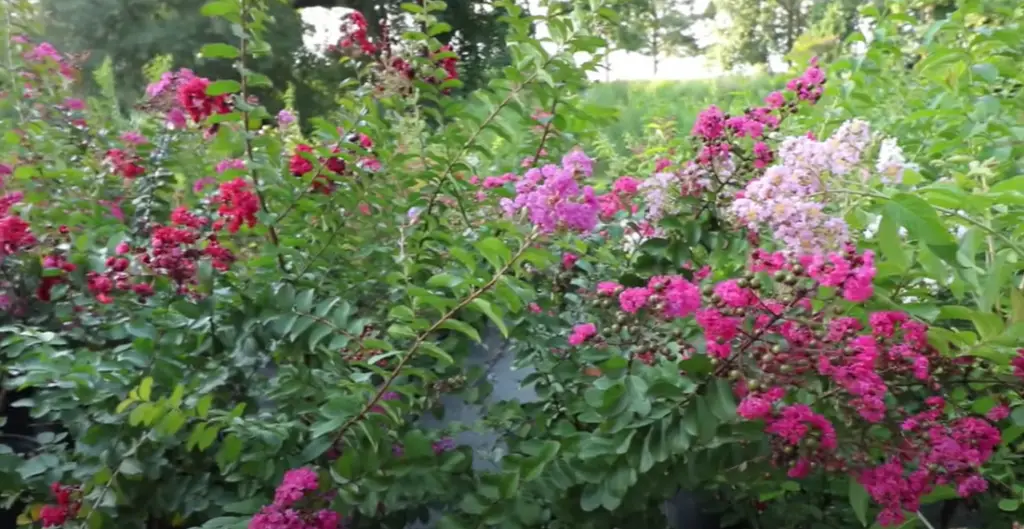
There are a few basic maintenance steps that you should take to keep your crepe myrtle in good condition. They cover:
- Pruning – Proper pruning is essential for crepe myrtle health and beauty. Crepe myrtles should be pruned annually in late winter or early spring to maintain their shape and promote new growth. When pruning, ensure that you are only removing dead or diseased branches, as well as crossing branches that can interfere with the tree’s natural growth.
- Fertilization – Crepe myrtles should be fertilized annually in the spring with a balanced fertilizer to encourage new growth and ensure the tree is healthy. If you’re unsure of what type of fertilizer to use, ask your local gardening store for advice.
- Mulching – Adding a layer of mulch around your crepe myrtle can help keep the soil moist and discourage weeds. It’s best to use organic mulch, such as wood chips or shredded bark, which will eventually decompose and provide nutrients to the soil.
- Pest Control – Crepe myrtles are prone to infestations of aphids, scale insects, spider mites, and other pests. If you notice these insects on your crepe myrtle, it’s important to address the problem quickly before it gets out of hand. You can use an organic insecticide or contact a professional pest control company for assistance.
Overall, crepe myrtles are very easy to care for and will bring color and beauty to your garden year after year. With some basic maintenance practices, you can ensure that your crepe myrtle remains healthy and vibrant for years to come. [5]
When is It Better to Plant a Crepe Myrtle?
The best time to plant a crepe myrtle varies depending on where you live and what type of climate and soil conditions your garden has. In general, spring is the best time for planting trees in most parts of the United States since it allows for ample time for the roots to establish before winter sets in. Planting in early spring also allows plenty of time for the tree to develop and grow during the summer months. [6]
When planting a crepe myrtle, it is important to select a location that has full sun exposure, at least six hours of direct sunlight every day. These plants also prefer well-draining soil with plenty of organic matter so that their roots can spread out and establish.
The planting depth of a crepe myrtle is also very important, as the root ball should be placed at least two inches above the ground surface to ensure proper drainage. It is essential to water your tree regularly until it becomes established in its new location. Once established, crepe myrtles are fairly drought tolerant and require little additional maintenance other than occasional pruning to keep them healthy and looking their best.
In warmer climates, such as the southern US states, fall is also an acceptable season for planting trees since temperatures are milder and there is more time for roots to become established before winter sets in. If you live in a colder climate, it may be best to wait until spring to plant crepe myrtles as the cold winter months can be too much for the young tree. [7]
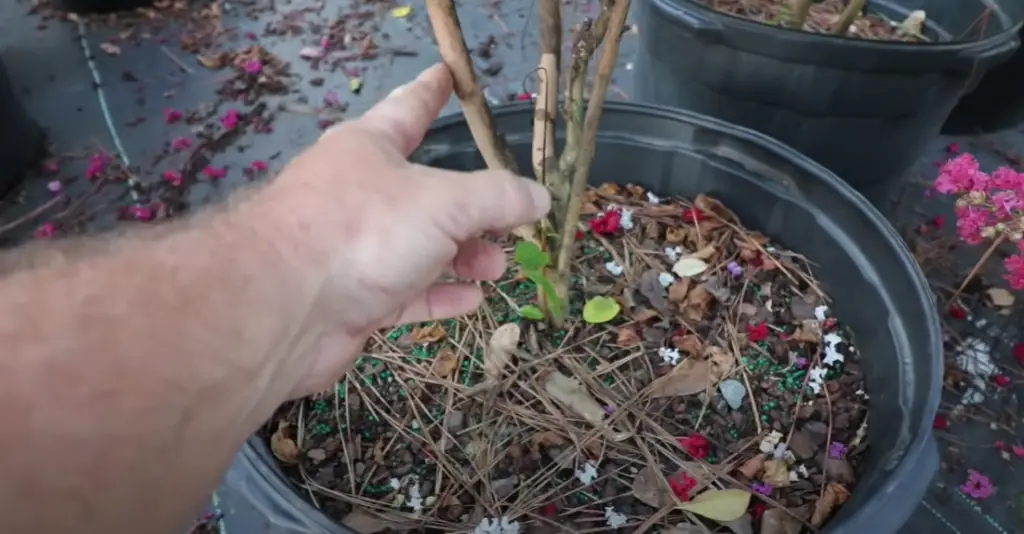
How to Plant a Crepe Myrtle?
Planting a crepe myrtle is quite easy, but it’s important to do it correctly. Here are some simple steps to follow:
Select a site for your crepe myrtle
When choosing a place for your crepe myrtle, make sure it has plenty of space and sunlight. The tree should have access to at least 6 hours of direct sunlight each day. It’s also important to choose a spot that is well-drained. Crepe myrtles do not like wet feet!
Preparing the soil for your crepe myrtle
Before you plant your crepe myrtle, make sure the soil is well-prepared. You should use a spade to loosen the soil and remove any weeds or debris in the area. If necessary, you can add some compost or fertilizer to improve drainage and add nutrients to the soil.
Planting your crepe myrtle
Once the soil is ready, it’s time to plant your crepe myrtle! Dig a hole that is about twice as wide and deep as the root ball of your tree. Gently place the tree in the hole and backfill with soil. Make sure you firm down the soil around the roots so that they are secure. Finally, water the area generously.
Aftercare for your crepe myrtle
Now that you have planted your crepe myrtle, it’s important to give it proper aftercare. Make sure you water it regularly and check on the soil moisture level often. Fertilizing your tree in the spring will help promote healthy growth and flowering. Pruning is also important to keep the tree healthy. Make sure to prune your crepe myrtle once it has finished flowering to maintain its shape and size.
With proper care, your crepe myrtle will thrive in its new home! You can look forward to enjoying beautiful blooms each summer for years to come. Happy planting! [8]
How To Care For Your Newly-Planted Crepe Myrtle?
Once your crepe myrtle is planted, there are a few steps to take to ensure its health and longevity.
- Water your crepe myrtle regularly. This will help to establish a strong root system and encourage growth of the new plant. It is important to remember not to overwater, as this can cause root rot.
- Provide your crepe myrtle with adequate sunlight, preferably four or more hours of direct sun each day. This will also ensure that it grows properly and is healthy.
- Fertilize your crepe myrtle every six to eight weeks with a balanced fertilizer. This will help promote healthy growth and flowering throughout the season.
- Prune your crepe myrtle annually in early spring before new growth begins. It is important to use clean tools when pruning, as this will help prevent the spread of disease.
- Monitor your crepe myrtle for signs of pests or diseases and treat accordingly if necessary. Aphids, mites, and scale insects are all common pest issues with crepe myrtles, but they can be treated with insecticidal soap or horticultural oil. Leaf spots and powdery mildew can also occur, but can be treated with a fungicide if needed.
- Mulch your crepe myrtle to help retain moisture in the soil and keep weeds at bay. This will also add much needed organic matter to the soil and help prevent diseases from forming. [9]
What Diseases Can Crepe Myrtle Plants Have?
There are a variety of diseases that can affect Crepe Myrtle plants. These can include:
- Leaf Spot: This is caused by a fungus called Cercospora spp. It will cause the leaves to have brown or black spots with yellow halos around them, and eventually the spots will become purplish in color. The leaves may also become discolored and curl up.
- Powdery Mildew: This is caused by a fungus called Erysiphe polygoni, which causes a white powdery substance to appear on the leaves and stems of the plant. It can be spread through air or contact with infected plants.
- Phytophthora Root Rot: This is caused by a fungus called Phytophthora parasitica. It will cause the roots of the plant to rot, leading to wilting and eventual death. The leaves may also turn yellow or brown.
- Anthracnose: This is caused by a fungus called Colletotrichum gloeosporioides. It will cause brown or black spots on the leaves and stems of the plant, which may also become distorted.
- Botrytis Blight: This is caused by a fungus called Botrytis cinerea. It will cause brown spots to appear on the leaves and stems, which can lead to leaf drop.
In order to prevent diseases from occurring, it is important to regularly prune and fertilize Crepe Myrtle plants as well as keeping them in an area that receives adequate sunlight and water. Keeping the plant in well-draining soil is also important, as this will help to reduce the chances of root rot. Additionally, it is a good idea to remove any infected leaves or stems from the plant in order to prevent further spread of the disease. By taking these preventive measures, you can help ensure that your Crepe Myrtle plants remain healthy and strong. [10]
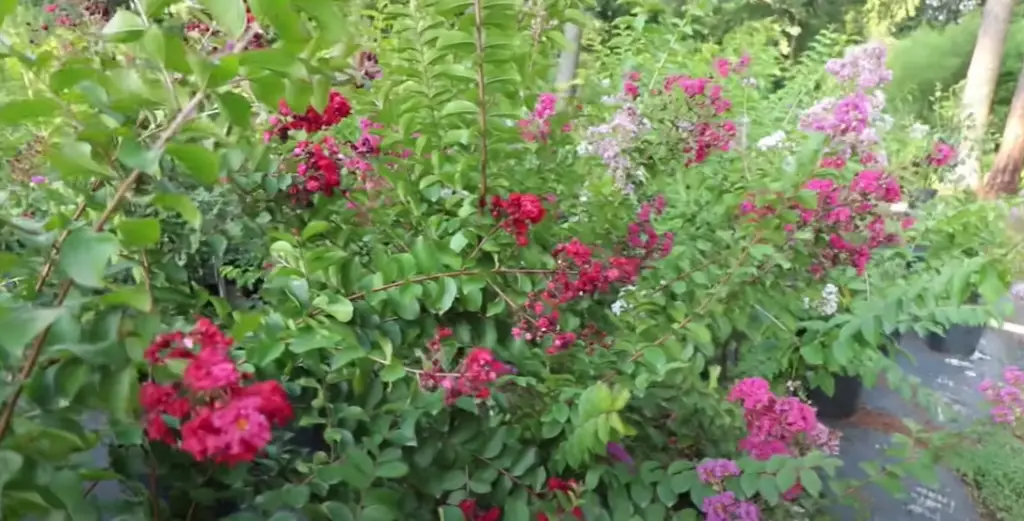
Troubleshooting Common Crepe Myrtle Problems
Crepe myrtles are an attractive addition to any garden, but they can be prone to a number of issues. Here are some tips for troubleshooting the most common problems associated with crepe myrtles:
Disease
The most common disease that affects crepe myrtles is powdery mildew. This fungus causes white patches to form on the leaves of the plant. To prevent or treat this problem, be sure to provide your crepe myrtle with adequate airflow and keep it well-watered. If the mildew is severe, you may need to treat it with a fungicide.
Insects
Crepe myrtles can attract a variety of insects, including aphids, scale, mealybugs and whitefly. To control these pests, you can use a combination of natural solutions such as insecticidal soap or neem oil. If the infestation is severe, you may need to apply a synthetic pesticide.
Winter Damage
Crepe myrtles are hardy plants, but they can still be affected by extreme cold. To protect your crepe myrtle during the winter months, you should apply a layer of mulch around the base of the plant and wrap it with burlap if temperatures drop below freezing. This will help to insulate the roots and prevent frost damage. [11]
FAQs
Can you plant crepe myrtle in late summer?
Yes, you can plant crepe myrtle in late summer as long as the temperatures are not too extreme and there is sufficient moisture for the tree to establish itself. It is best to water your newly planted tree at least two times a week until it is fully established. Additionally, if temperatures become exceptionally hot, you should provide additional shade or use mulch around the base of the tree to help keep its roots cool. After planting, it is important to monitor your crepe myrtle and provide any necessary care and maintenance over the next few weeks or months in order for it to remain healthy.
Where is the best place to plant a crepe myrtle tree?
The best location to plant a crepe myrtle tree depends on the specific needs of the tree and your desired outcome. Generally speaking, crepe myrtles prefer full sun locations, so somewhere with at least 6 hours of direct sunlight is ideal. However, even in full sun locations you may need to provide some afternoon shade if temperatures are consistently above 90 degrees. Additionally, crepe myrtles do best in fertile soil that is well-drained. If you live in a region with hot and dry summers, then it is important to water regularly during the summer months for optimal growth and health of your tree. Lastly, when planting a crepe myrtle it is important to provide adequate space for the root system to spread out. Planting too close to structures or other plants can cause overcrowding and inhibit growth.
How far apart should crepe myrtles be planted?
When planting crepe myrtles, it is best to give them enough space for their root system to establish and develop. Generally, you should plant the trees at least five feet apart from each other in order to ensure that they have enough room for proper growth.
You can also consider grouping multiple trees together if your garden has a large enough area with adequate soil. Planting the trees in a tight clustering will create an interesting pattern, and it can also provide some protection from the elements for the plants. However, it is important to remember that this grouping should still allow enough room for each tree’s roots to expand and grow.
What is the best climate for crepe myrtles?
Crepe myrtles thrive in warm climates, such as those found in the southeastern United States. Crepe myrtles can withstand temperatures up to 115°F (46°C). They prefer full sun but will tolerate some shade. They need at least 6 hours of direct sunlight each day for best growth and flowering. Soil should be well-drained, sandy loam with a pH range of 5.5 to 6.8. Crepe myrtles require regular watering during the growing season and should be fertilized several times each year with a slow-release fertilizer designed for flowering shrubs or trees. Pruning is also recommended in order to maintain the desired shape and allow for better air circulation in order to reduce disease and pest problems.
Useful Video: Crape Myrtle Tree | Step by Step Planting
The Bottom Line
Planting crepe myrtles in your garden, orchard and/or landscape can be incredibly rewarding. Whether you’re a gardening enthusiast or you’re simply looking to spruce up your outdoor area, crepe myrtles are an excellent choice. Thanks to their fast growth rate and attractive blooms, these plants can do wonders for any space. When it comes to deciding the best time to plant crepe myrtles, spring is usually the optimal season. In areas with warm climates, you may also want to consider planting in autumn as well before winter hits. Before purchasing them from a local nursery or garden center, make sure that the soil quality and climate conditions are suited for these plants. With adequate care and attention, you can be assured of a vibrant garden adorned with beautiful crepe myrtle blooms every year!
References:
- https://plants.ces.ncsu.edu/plants/lagerstroemia-indica/
- https://treenewal.com/what-characteristics-do-crape-myrtles-have/
- https://www.southernliving.com/crepe-myrtle-varieties-6830247
- https://lakelandyardandgarden.com/blog/49703/how-to-care-for-crape-myrtle
- https://www.thespruce.com/crepe-myrtle-growing-guide-5210870
- https://www.southernliving.com/garden/how-to-plant-a-crepe-myrtle
- https://www.plantmegreen.com/blogs/news/the-best-time-of-year-to-plant-a-crape-myrtle
- https://www.thetreecenter.com/guides/plant-crape-myrtle-trees/
- https://rootingforblooms.com/new-crape-myrtle-heres-how-to-care-for-your-new-addition/
- https://hgic.clemson.edu/factsheet/crape-myrtle-diseases-insect-pests/
- https://www.southernliving.com/crepe-myrtle-diseases-and-pests-6827543










Leave a Reply
View Comments